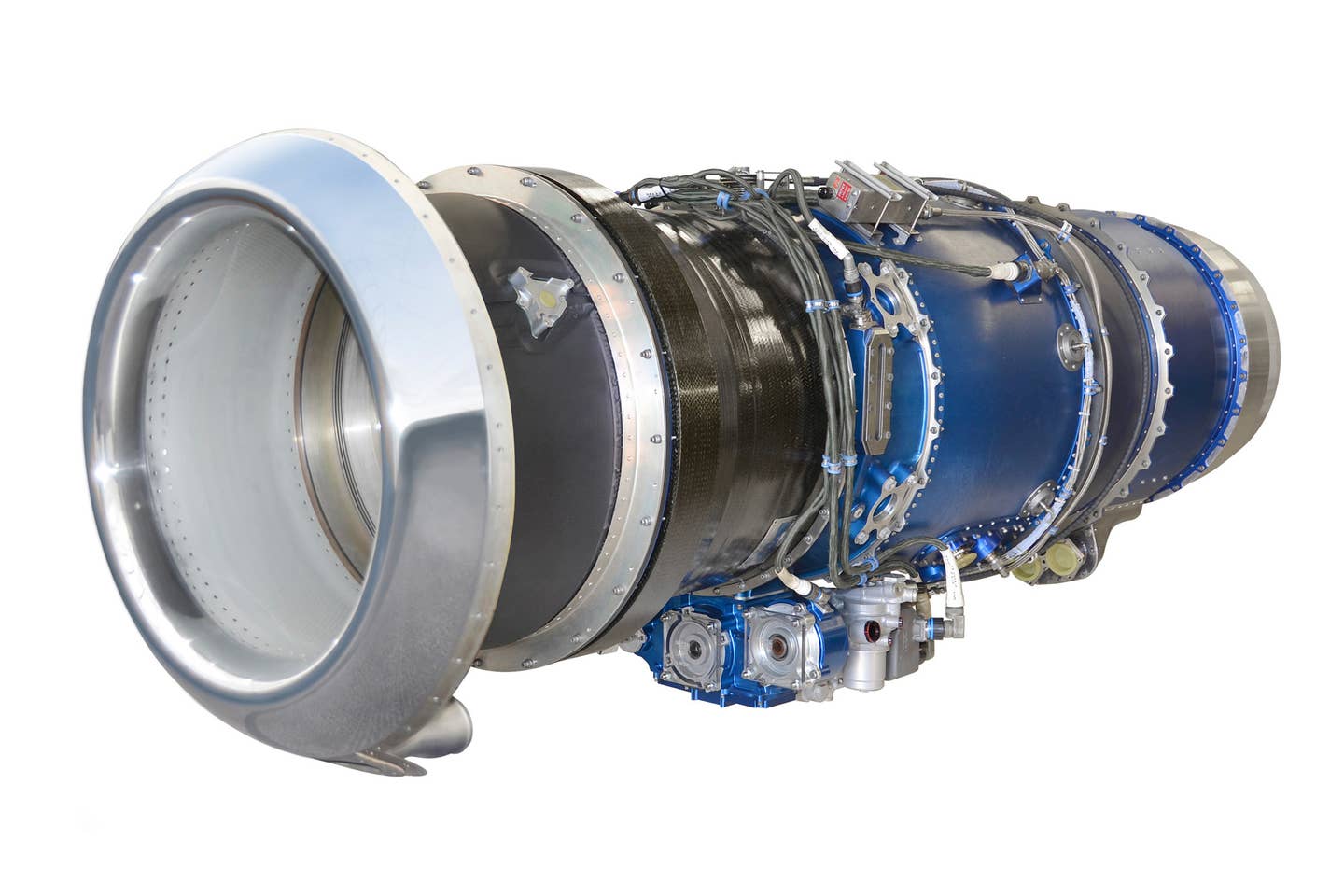
The Williams International FJ44-4A on the company’s testbed aircraft successfully completed flight testing using 100 percent SAF. Williams International
Williams International recently completed a successful flight test of its FJ44-4 engine using 100 percent sustainable aviation fuel (SAF) on their flying testbed aircraft. The flight was conducted from the Williams International flight operations center in Pontiac, Michigan, and flew to points in northern Michigan with a total of 3.5 hours of flight time at a cruising altitude of FL450. This flight test follows extensive material compatibility and endurance testing that validated engine performance and durability using 100 percent SAF.
“The flight was uneventful and the engine performed flawlessly,” said Williams International chief test pilot Robert Lambert, adding that “the engine did not even seem to notice that it was burning sustainable fuel.” This successful flight marks another step in the Williams Blue Planet Initiative to significantly reduce the environmental impact of aviation by driving towards a carbon-neutral product lifecycle. “We have shown that Williams’ engines can utilize 100 percent SAF to help decarbonize aviation,” said Gregg Williams, chairman, president and CEO of Williams International, and copilot of the flight test. “The next critical step is to accelerate the production of SAF to make it more widely available and affordable.”
The importance of testing jet engines using 100 percent SAF cannot be understated if the industry’s goal of halving total carbon emissions by 2050 is to be achieved. According to an AirBP report, a manufacturer of SAF, jet fuels made from sustainable materials such as waste cooking oils, wood waste, and fast-growing energy crops like algae are often blended into traditional jet-A made from fossil fuels. AirBP’s data says SAF produces up to 80 percent fewer lifecycle carbon emissions than the traditional fuel it replaces. To be a truly sustainable fuel, it needs to be 100 percent SAF, such as the fuel used in the recent Williams International flight test.
The FJ33/FJ44 family of fanjet engines began with the introduction of the simple yet rugged FJ44-1A, and there are currently more than 5,700 FJ44 engines in service with an accumulated 13 million hours in flight, according to the company. This two-spool turbofan engine uses two low-pressure turbines to drive a fan and intermediate pressure compressor, and one high-pressure turbine to drive a centrifugal compressor. The company currently offers four models in thrusts ranging including the 1,850 lbf produced by the FJ33, with the FJ44 family producing between 2,100 to 3,600 lbf of thrust.
Because of the low weight and high output of this small family of engines, OEMs have been able to develop light jets such as the single-engine Cirrus Vision Jet, which uses the Williams International FJ33-5A for its power. And the PC-24 “Super Versatile Jet” from Pilatus uses a pair of Williams FJ44-4A engines producing 3,420 lbf of thrust each for power.
Along with producing its family of fanjet engines, Williams International is also known for establishing highly integrated and automated manufacturing facilities to produce its commercial and military products. According to the company, its production workflow simply boils down to this: “Ingot and other raw materials enter one end of these facilities and finished engines exit the other.”

Sign-up for newsletters & special offers!
Get the latest FLYING stories & special offers delivered directly to your inbox






